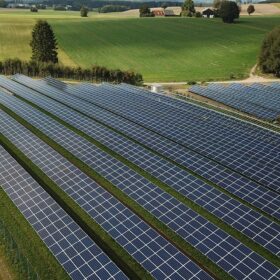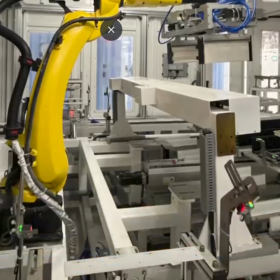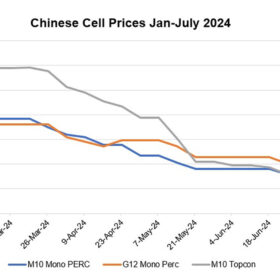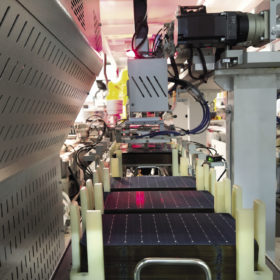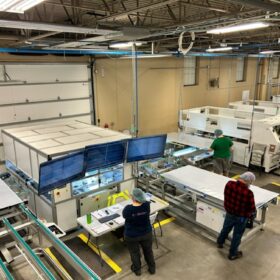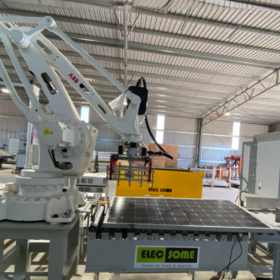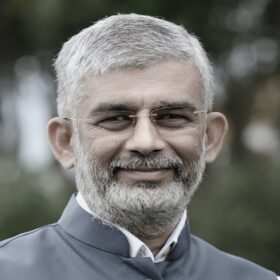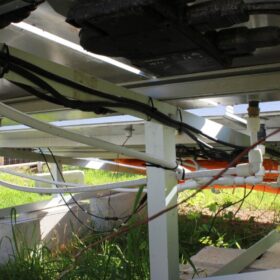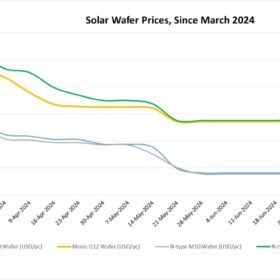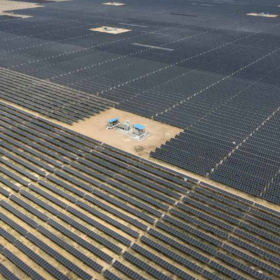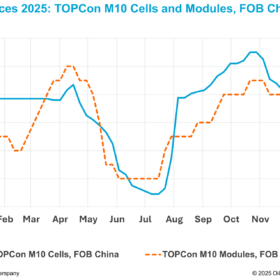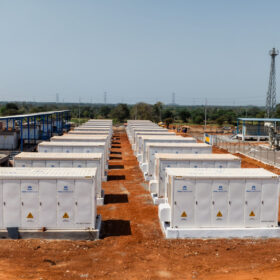Advancing renewable energy through technological innovation and digitalization
To accelerate the adoption of technological innovation and digitalization in the renewable energy sector, concerted efforts are needed from policymakers, industry leaders, and technologists alike. Governments can create supportive policy environments, invest in research and development by providing incentives, at the same time supporting early-stage companies by creating favorable regulatory environments to fostering public-private partnerships.
Websol Energy System posts profit in Q1
The Kolkata-based solar cell and module manufacturer has reported a total income of INR 111.83 crore and a net profit of INR 22.88 crore for the April-May-June quarter of FY 2024-25
Chinese solar cell prices fall amid oversupply
In a new weekly update for pv magazine, OPIS, a Dow Jones company, provides a quick look at the main price trends in the global PV industry.
ANIL’s solar module exports in Q1 up by 109% yoy
Adani New Industries Ltd (ANIL), part of Adani Enterprises Ltd, sold 1,379 MW of solar modules in the first quarter of the current fiscal 2024-25. This included exports of 808 MW.
Heliene and Premier Energies announce U.S. solar cell factory
Heliene is a solar module provider operating in North America, while Premier Energies is the second largest solar cell manufacturer in India.
Enel Green Power Australia signs solar panel recycling deal with Elecsome
Italy-headquartered renewables developer Enel Green Power Australia has committed its 2.8 million solar panels powering current or planned assets to a circular economy by signing a long-term agreement with solar panel upcycling specialists, Elecsome.
Nigeria breaks ground on solar module assembling plant
Nigeria’s Minister for Innovation, Science and Technology has said the country is committed to replicating similar solar module assembling plants across all its geopolitical zones.
Ensuring sustainability in solar and battery storage supply chain
Geneva-headquartered dss+, a spin off from DuPont, helps industries switch to sustainable and resilient operations. It serves power and utilities, oil and gas, metals and mining, among other industries.
With a strong presence in India alongside leading industry players, dss+ has been instrumental in shaping the region’s energy landscape. Srinivasan Ramabhadran, managing director, APAC, dss+, speaks to pv magazine about balancing efficiency, cost, and environmental impact in solar and battery storage manufacturing.
PV module cooling tech based on water chamber
Scientists in Malta have created an after-market cooling solution that can be fitted to existing standard PV modules. The system is based on a water chamber placed at the backside of the module and can reportedly provide a net electrical energy gain of more than 9%.
Wafer prices near bottom, size evolution and capacity globalization continue
In a new weekly update for pv magazine, OPIS, a Dow Jones company, provides a quick look at the main price trends in the global PV industry.
